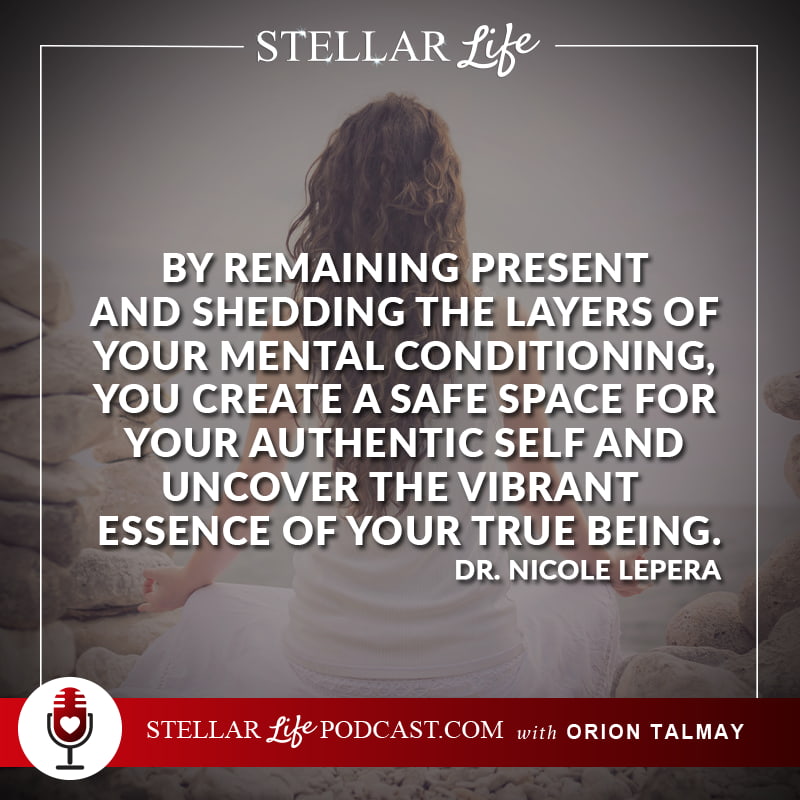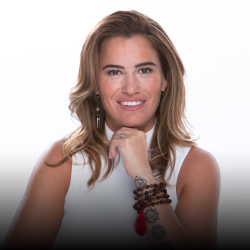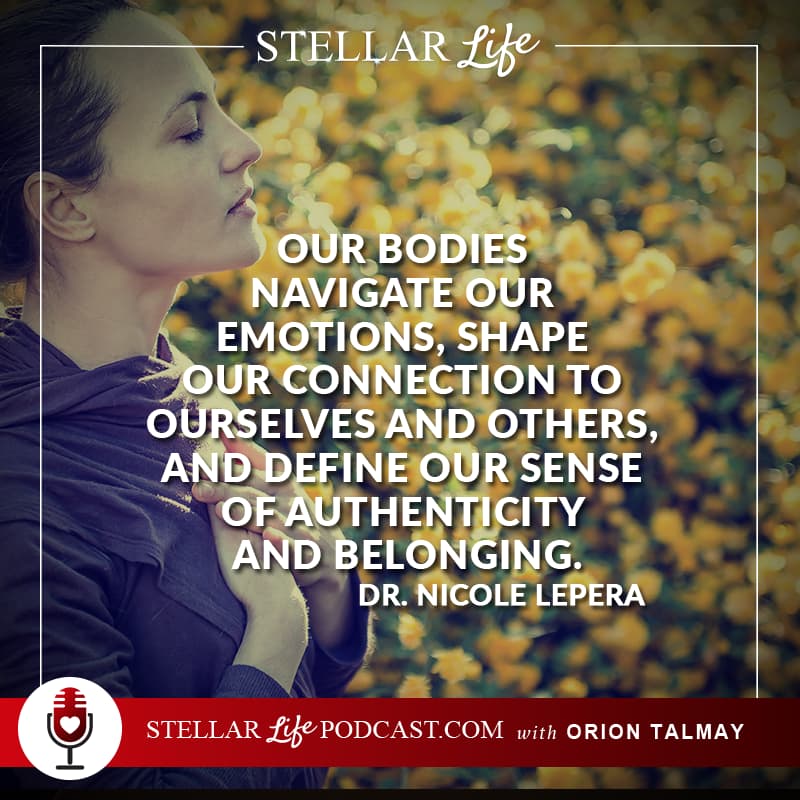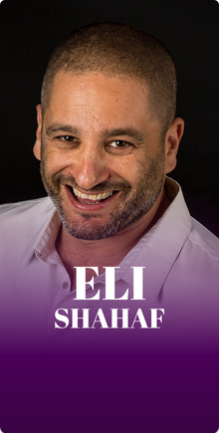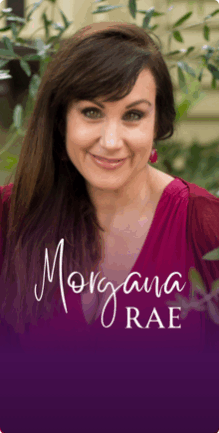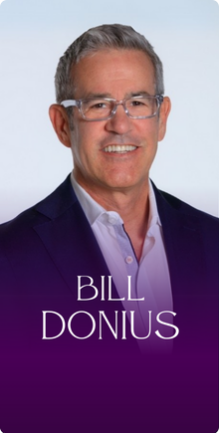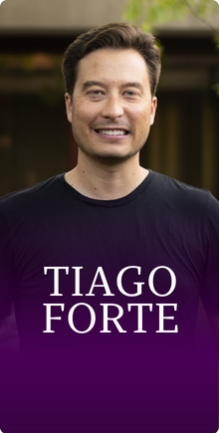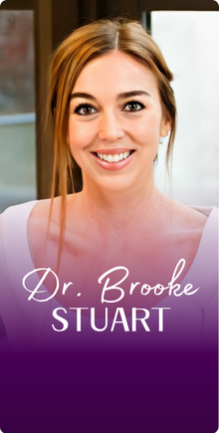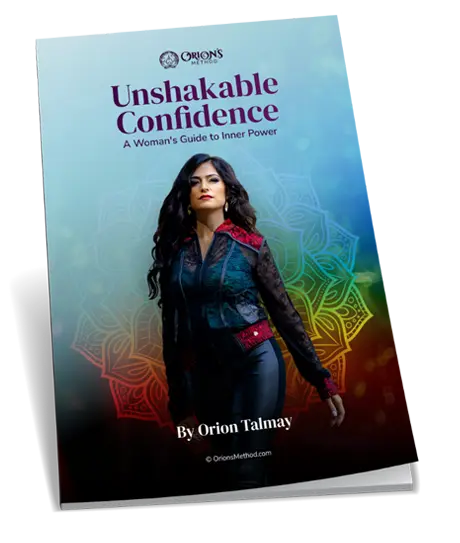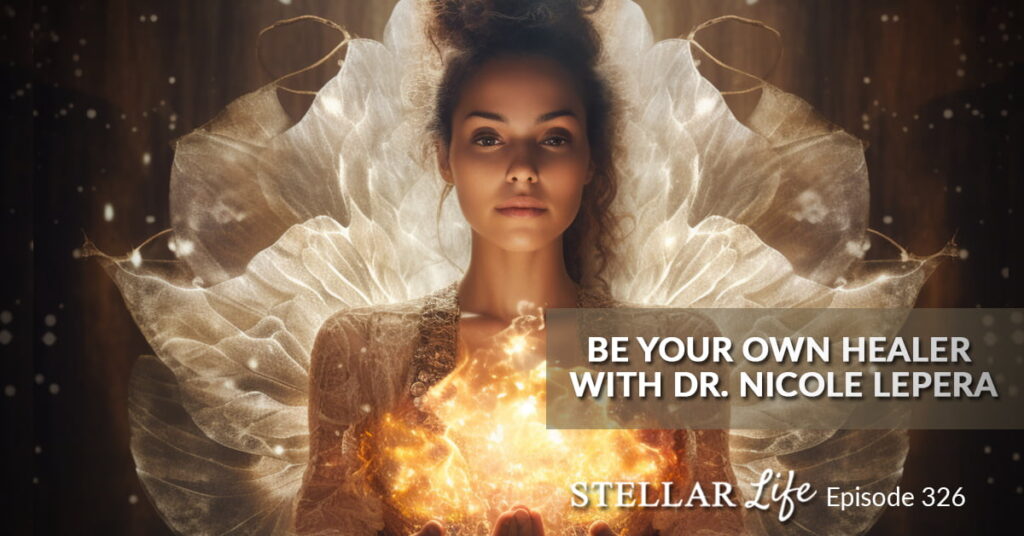
In this Episode
- [03:34]Dr. Nicole LePera recalls her journey of becoming a holistic psychologist.
- [12:14]Dr. Nicole emphasizes the importance of being active in learning how to be conscious. She also discusses the first step to holistic healing
- [15:06]How to keep your attention to the present moment and connect with your body.
- [18:27]Dr. Nicole explains how you can be on the journey to meet yourself.
- [24:16]Orion and Dr. Nicole discuss modeling without shaming yourself or others.
- [28:39]How can you correct your false identity and find your true self?
- [32:19]Dr. Nicole talks about connecting with the pure energy inside of you and forming a new belief so you can manifest your destiny.
- [36:43]Dr. Nicole explains the foundation of worthiness and the benefits of a slow approach.
- [41:17]Dr. Nicole shares the creation of the self-healer community and how you can participate.
- [47:06]Overcoming fear of visibility and judgment and dealing with feedback.
- [49:53]Using boundaries to create a safe space.
- [57:07]Dr. Nicole’s top tips for living a stellar life.
About Today’s Show
Hi, Dr. Nicole and welcome to the Stellar Life podcast. Thank you so much for being here.
Thank you so much for having me, Orion.
Before we begin, please tell me briefly about your origin story and how you became a holistic psychologist.
In the case of many of us on a journey, my shift into becoming what is known as a holistic psychologist was led by my healing journey. On a personal side of my life, I struggled with anxiety coupled with an innate desire to understand myself and others, which led me to the career path of becoming a psychologist. That is how I would not only gift myself and those working with me this insight but to relieve the suffering that I had experienced.
Several years into opening up a practice, I was living in Philadelphia at the time and continuing to struggle with lifelong anxiety myself. I started to feel disempowered with the work I was doing, with the clients I saw at that point, quite consistently, some for several years. I kept being met with reports of feeling stuck, not relieving suffering, repeated habits and patterns, and seeing many similarities in my life.
For me, seeking to understand, not feeling good, is the case for most of us. We determine we need to shift or do things differently when we’re suffering and feeling disconnected, unfulfilled from the life we created. This led me to understand why so many of us are universally stuck. Honoring the body holistically and using tools I now talk about as the holistic psychologist day in and day out on social media.
How did you start your journey? One day you woke up and said, “This is not working. It’s only a piece of the puzzle. I need to seek more.”
It wasn’t a one-moment incident for me. As I saw it and experienced it, I gradually descended into that knowingness. Though I write about particular moments in my first book, How to Do the Work, where there was a several-month period where I started to feel upset, dysregulated, and low.
For me, it was beginning to become consciously aware of why that might be, and that was led by new information. As many of us do, I went to Google to diagnose what was happening to me. “Why was I having so many physical symptoms besides the anxiety I’d always experienced?”
When I thought I was going to be met with a diagnosis of something medically wrong with me, I was gifted with some new science—the science of epigenetics. But the possibility of shifting and changing what many of us believed to be ingrained or DNA genetic–driven circumstances, anxiety being one of them.
My journey wasn’t a moment of realization. It was gradually learning new information, applying it in my own life, and beginning with the foundation of becoming conscious. Seeing the habits, patterns, and what was creating the life that I was living day-to-day is always the basis of change because we can’t make new choices until we see what, for many of us, are the choices that autopilot or that habit itself is making for us day-in and day-out.
What type of new modalities did you study?
The choices I was particularly interested in making for myself were based on my body and learning to regulate my nervous system.
In my opinion, the big new piece that is foundational now and will remain foundational is the piece of the body. Coming from clinical training, a very traditional program emphasized the mind. I learned much about the gold standard in mental health treatment: cognitive behavioral therapy, which emphasizes and prioritizes our thoughts.
I believe in and devoted an entire chapter on how to do the work to the power of our beliefs or thoughts. Though what I came to see was missing—and it was incredibly problematic that it was missing—was the body.
It was not only by building on this foundation now of conscious awareness that I could begin to show up and make new choices. The choices I was particularly interested in making for myself were based on my body and learning how to regulate my nervous system.
That looks like paying attention to what I was eating, how I was eating, how much I allowed my body to rest, and what sleep looked like on the other side. Then, what movement looked like. Naturally, just pay attention to my body’s normal rhythms, like, “Is my breath nourishing and deep? Do I feel alive with energy, grounded, and present?”
What I came to realize is I was very disconnected. I was living in a very dysregulated body. Staying committed to those daily choices to care for my body differently allowed me to change my life.
I love what you said about connecting to your body. I had a whole journey of connecting to my femininity because I got hurt in an abusive relationship and became very masculine. I had a hard time getting into a relationship because I would put down all the guys I would date to ensure I won’t get hurt. For me, embracing my feminine side was weak. It was not something that I wanted to do.
Then I had a whole journey with Sheila Kelley and studied pole dancing with her. The way she teaches it is more like a journey into self. You emote through the body, connect, and listen to her. When you dance, you dance your emotions. Some dances were the rage, and some dances were elated.
My healing happened through music, movement, and my body because we are not just of the mind. It’s so easy to get stuck in our heads, especially because we’re always so stuck with our screens and thinking. We don’t even take the time to pause and breathe. It’s holistic. We are not just one thing; we are both mind, body, and spirit, good and bad. Embracing everything that we are is the key to a more fulfilling life.
I couldn’t agree more, and I appreciate you sharing aspects of your journey. The reality is that our body navigates our emotions, how connected we feel to who we are, and how connected we feel to those around us.
Most of us didn’t have physically or emotionally safe and secure early environments where all the learning happened. We come here, and our main task is to learn how to care for our bodies, navigate our emotional worlds, and connect with others.
When our early environments and our relationships, in particular, lacked that safety and security, much like you described, being a part of an abusive relationship caused pain or what we would label in the field as trauma in our minds and body. No matter how distant you are in terms of years, geographic location, or even point of contact with this other individual and for most of us—this includes our parents and our earliest relationships—we are still carrying the imprint of that in our subconscious mind, which is wired to avoid possible future hurts or harms.
Staying committed to daily choices to care for your body allows you to change your life.
We adapt or modify ourselves from that protective stance. Using your example, you became more masculine out of this protection to keep people away because “when someone got close and vulnerable, I was violated. There was a trauma that I lived in that experience.”
It’s like a thick shield that we put on. Whether in relationships or anything in life, we get hurt. We put on all those layers, and we don’t understand why we’re so stuck and why it’s so hard to move forward because we are carrying this heavy armor on, not even knowing that we don’t need it anymore.
That was the point. My hopeful takeaway from the first book, How to Do the Work, is that readers will be introduced to that separation, that armor that you’re beautifully describing. I call it habits. All those ways we’ve adapted to these early hurtful moments, experiences, environments, or relationships have become our conditioning.
Many of us walk into our future and begin to believe because these habits operate outside our awareness that this is just who we are. “I’m a person who can’t have a relationship. I’m distant from other people.” Though that distance is real, it was born out of protection. Not necessarily any statement of you, your worth, your value, or what you deserve even to be in those relationships you’ve learned to avoid.
My hope for all of the work is to give people information to create that separation because so many of us are identifying with our habits, with all of these ways that we’ve had to adapt to survive, and then we are limiting ourselves. We’re feeling unworthy and continuing to repeat those patterns, which only affirm how unworthy we feel.
Again, we create a little space and begin to observe from that conscious state I described earlier and see these habits in action. Now, we cannot only create that separation where we don’t become our habits, and they do not reflect our identity. But then, we have the space to begin making new choices, break those habits, and create new habits so that somewhere down the line, I get to feel and experience myself anew, different from how I used to be.
The first step is awareness. I see my habit. Therefore, I can change it. And then what?
When our early environments and relationships lacked safety and security, we still carry that imprint in our subconscious mind, which is wired to avoid possible future hurts or harms.
I see my habit, and I can change it. I want to emphasize the active nature of this practice; learning how to be in that conscious state. We can’t be just like a light switch. We don’t just turn on our consciousness and never turn it off. I like to state that directly because many of us have that expectation or belief.
I’ve heard about consciousness or tuned in the right to my conscious awareness, which just means I’m present in my body. I feel what it’s like to sit in this chair with these lights on me. I can feel my heart rate. I can feel myself. I’m in that conscious state of awareness.
When we touch that moment so quickly, we return to that autopilot. I want to emphasize the action of creating those conscious moments throughout our day because it isn’t like I’m conscious now. I’ll be conscious for the rest of my hours today. No, I can just as easily go back into my habits, and I often do.
Learning how to be conscious is a challenging action. When we’re beginning to pay attention, usually what we’re met with is uncomfortable things, uncomfortable thoughts in our head, uncomfortable feelings in our body, which is even more of a reason to go right back into those habits where I’ve taught myself to be savvy and learned to keep them below the surface or to keep my attention distracted outward.
Even with all of the to-do lists that I have to do, maybe even distracting myself in my mind, like you were saying, “I’m always in my thoughts.” A lot of us spend most of our day in our thoughts. We’re not connected with the body like I was sharing, which has a heart rate that’s shifting and changing, whose breath is changing, and whose muscles are tensing or relaxing, all based on information about how we perceive our environment. If we’re not tuning into that, we’re leaving out a whole story. “The more consciously aware I am, the more connected I can be to my body.” Now I have in that space that I was just talking about opportunities to make intentional choices.
When I discovered that my nervous system was dysregulated, which simply means it was responding to a threat in my environment. Even if there weren’t a threat objectively present, then on that foundation of consciousness, I would begin to make choices to help calm my nervous system, to do some deep belly breathing or a grounding practice, turning my attention to how it feels to be in a body grounded or supported by the earth.
Even when you said that, I said, “God, that feels good.” I like a deep breath right now. I like feeling my arms on the chair. I’m here, right here, right now. Less in my head, more present, more in the moment. It’s beautiful.
Thank you for sharing that, Orion. Much of what we’re reacting to is causing those fear responses or reactions in our body that are not objectively present in the current moment. “I might get lost in thought about something stressful,” and if I do decide at that moment, we always have the opportunity to choose what we’re paying attention to.
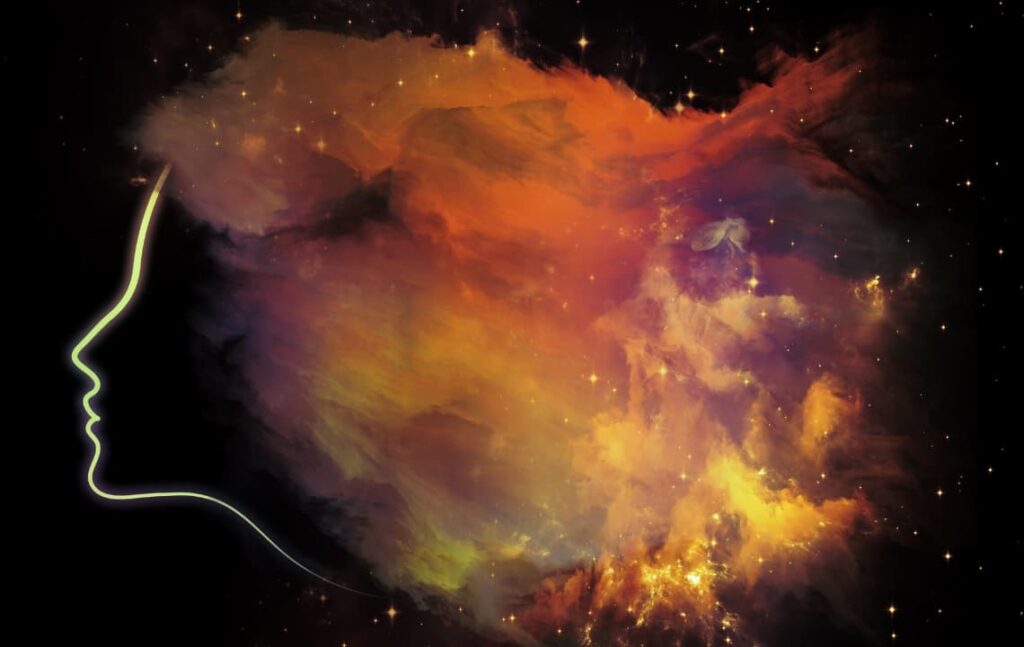
If I continue to think that stressful thought, my body is going to be stressed cause it’s continuing to send those messages to my body. If I was sharing how important it is, turn your attention to your present moment. You did that. You pulled your focus away from this hypothetical, stressful thought, and now you had the opportunity to be present to what’s here in our current moment, at least, is nothing stressful at all, and that’s why it felt good.
The reality is that much of what we’re reacting to lives in our heads. It does live in our past experiences. It’s being projected because something is similar to that early experience and is something I want to avoid happening again. But more often than not, it’s faulty, and it’s not accurate.
Again, we will react as if the stress or the threat is present even when it’s not. The biggest gift we can give ourselves is to tune into what’s here. Many of us will notice that what is here is safe, calm, and supportive, like the earth beneath us.
Then we can meet ourselves. What does that mean to meet yourself?
I will go back to this idea of the journey or the process of it somewhere earlier. The concept is like shedding. It probably came up cause I think a lot about peeling the layers of an onion.
Then, I created the new workbook, How to Meet Your Self, which was born out of a desire to give, especially to readers of How to Do the Work. You don’t have to read the first book to grab the workbook. I wanted to guide people in terms of, “Okay, if I have all these habits that are creating my life, let me begin to become consciously aware of them.”
The workbook is separated into three sections to begin the peeling journey. “What is our body? What messages are in our body? How is our nervous system reacting at the moment?”
We adapt or modify ourselves from the protective stance.
Once we become present in our body and the trauma that’s living there, the next layer we can peel back is our conditioning. All the thoughts in my mind, this ego story that I’ve created, this idea of who I think I am based on, more often than not, how I’ve had to fit in, not who I am at all like we were talking about. Not my identity, but more based on my habits.
Once I become present, then to all of the mental conditioning that’s coloring my world, like that onion, now I have the safety and the space to begin to meet myself because what that means is getting in contact with the true me. What I think, not what I’m saying, because that’s what someone wants to hear. “What am I feeling? What is my perspective? What is my need? What is my want?” That is me that I’m trying to meet.
So many of us have habits in those areas. We’re saying what we think others want to say. We’re suppressing our emotions because it wasn’t safe in our childhood. We don’t even stop asking ourselves what we want or need because we’re so worried about what everyone else wants or needs from us. I often frustrate people when there aren’t one, two, or three steps to meeting yourself because it is that journey of witnessing what we’re not.
All of the conditioning was an adaptation. It was once my survival mechanism. It no longer has to be, and then I have space to rediscover who I am. For each of us, that is an individual journey because that’s the beauty of humanity. We’re all uniquely different. The goal here is to be uniquely us because we become a stronger group when we join as unique individuals.
Because I have strengths in areas that might not come as easily or naturally to you, Orion, you might have strengths in areas, or I know you don’t come easily or naturally to me, and now together, we have strengthened more areas.
So many people are trying to be like so many people, even fit externally. There is one celebrity, and all the young girls want to look like her. Many people think that if they look or act like somebody they’re not, they will be somehow better than who they are. It’s diminishing their gifts and talents, as you said.
Be in a space that creates opportunities for you to make intentional choices.
There’s so much wisdom in there, driven by our evolution. Because to survive, I often think about humans in general and the different contexts, climates, and communities we’ve evolved from. The reality is that we need to band together with other supportive people to keep us safe and ensure that all the things that need to be done to upkeep a community are being done.
Ultimately there is a risk to our survival if we cannot join together. If no village wants me to be a part of it, my survival is at risk if I can’t fit in or get along with other people. What that now translates to is comparison. We seek in some way or are externally motivated because fitting in is important. It’s wired. We need those relationships. We need them one time to survive.
However, we have a social media landscape. We have endless amounts, outside of even celebrities. We even have people up the block who might know their account, and we get to watch what they’re posting and curating now on social media.
I share the evolution behind this because these behaviors are especially if we see them in ourselves. We might even have well-meaning loved ones who say, “You’re just doing this to yourself. You’re just making yourself feel bad. Stop doing it. This is a moment when we don’t normally have to shame ourselves.“
The tendency to compare ourselves with other people and to try and modify ourselves in ways because we perceive them as being more successfully connected or living the life we want that’s natural. However, we can begin to create more space to honor our uniqueness. A lot about shame and compassion, the other side of shame, throughout the healing journey because what keeps us stuck is that shameful inner voice.
It’s the idea that we shouldn’t be feeling or experiencing something quite natural. If there is no safety and security, we will adapt. That is what our body will do. We will ensure we fit in with our community to survive. We have to shame those moments, and if we’re doing them to our detriment or if it’s not creating the habits we want, then we can create change.
Without shaming, modeling is great when you model someone more successful or powerful. After all, you want to become more like them because you’re driven to improve your future self.
By remaining present and shedding the layers of your mental conditioning, you create a safe space for your authentic self and uncover the vibrant essence of your true being. Share on XModeling comes from the intention to be good enough because you feel like you’re not good enough. Therefore, you are trying to push yourself aside just to look like somebody else. This is toxic modeling. It’s not modeling that serves oneself. It comes down to what’s the intention of modeling.
What you’re hammering down into is what I think a lot about the choice we make and what we do—looking, observing, and comparing to someone else. I might label that an objective thing, or they’re doing it or not doing it. The intention, the why, like you’re saying, what is the reason or the purpose that would shift or change whether or not it’s functional or adaptive. I want to continue because motivating me in this circumstance, whether or not it’s dysfunctional, makes me feel worse and more unworthy.
I couldn’t agree more. All actions apply the same thought to all actions, their objective. Whether I’m doing, eating, or consuming the thing is objectively just what’s happening. Whether or not it becomes an issue for me, “Why am I doing that? Am I doing it? I don’t have any other choice. Am I doing this the only way to feel better about myself?” Then we can give ourselves other choices.
I want to add a third example of something that commonly happens when comparing myself to others. For me, for a very long time on social media—I think it was even known as TikTok, the dancing app when it first came out—I know it’s evolved beyond that. But for me, it was a real pain point.
If I saw other people, maybe much like yourself, I would cringe if you were to video yourself in one of these classes. My skin would crawl, and I would think and sometimes say negative and judgmental things about the woman I saw dancing. Why did I have such a strong anger tearing down the reaction of, “Why are you dancing? You shouldn’t.”
Much of what we’re reacting to is causing fear responses in our bodies that are not objectively present in the current moment.
The reason I’ve come to uncover for me and what elicits that more negative reaction sometimes is because there was a deep part of me in childhood that desperately wanted to dance. I took dance lessons until I had a slightly bigger belly than most other girls in my dance class. I had to wear a leotard until I was always put in the back row because I wasn’t the best dancer. At the same time, I was succeeding and achieving in sports.
Before long, I felt bad in my body. I wasn’t getting celebrated by my mom. The only main way she knew how to connect with me was by celebrating my achievements—softball being one of them. Before long, I stopped dancing. Then into adulthood, I watched other people dance and ridicule them. I criticized them.
That’s another scenario I want to offer when we sometimes compare what we’re reacting so strongly and negatively to. It’s a deep one. It’s a deep passion. It’s a deep need that I might not feel safe enough to express on my own. It feels safer to tear down the person who’s doing it, roll their eyes, or shame someone else, as opposed to saying, “Hey, this is making me uncomfortable because there’s something in your freedom.”
That’s what it was for me: the freedom of being in your body and expressing and allowing emotions like music and dance can do. It can be medicine. It can be healing. That didn’t occur to me. All I saw was the discomfort of not having that freedom in my body and my emotional expression.
Wow. That’s powerful. We build some false identity. How can we correct that false identity? That is, “I am what I wear, who I associate with, and the money I have in the bank.” When we are in truth, just source energy, unique snowflakes, beautiful, radiant light. But we have this false identity. How do we find our true selves?
Going back to the two steps of changing or discovering our true self and identity, the first step was becoming conscious. Before I can change, expand, and embrace this unique snowflake being of infinite potential that I am, I have to become conscious of what I think I am first. I have to see this identity. I have to see what the identity lives in our ego.
Anytime our mind is thinking, speaking, affirming, “I’m this kind of person. I’m not this kind of person.” We give ourselves the label, beginning to pay attention, whether or not it’s coming out of our mouths to someone else or just living in our minds. Anytime we speak to ourselves, or someone else about our identity is a great place to begin to pay attention.

Most of us operate with a habitually learned identity. Identity that was born more out of how I had to show up less out of who I am. We can see it in our speech when discussing ourselves. We can see it in our mind’s eye while narrating our life.
Until we begin to see what identity is and who we think we are, we’ll never be able to drop into the reality that we are even beyond that—so beginning to pay attention and notice when we are using that “I” word and beginning to pay attention to the themes. Because chances are you’ll start to see in your mind’s eye or your speech, your narrative being created based on the themes in which you’re speaking about yourself.
Then chances are you can go back in time if you can recall your childhood or figure out more or less why or how you came to feel that way. Allow yourself to try new ways of being because that’s how we develop ourselves. We’ve had to adapt very consistent ways to very consistent circumstances. Then before we know it, that becomes the internal narration of who we are.
Do you believe in God?
Similar to how you’re even describing humans. I believe in a source of energy, absolutely of which we are all connected, unique beings, an extension. God is one of the tricky ones for a lot of us, especially if we come from a religious institution.
It’s been a while since I’ve been so directly asked, and part of me went back in time to the idea of God that I learned in my Catholic religion, which no longer resonates. Though I resonate with a god, a universal source being, like I said, of which we are all interconnected, a part of me is like, “Well, God, what do you mean?” No, I do, just not that being or a narration of God I was taught.
This isn’t to downgrade or talk badly about any religion. I’ve learned for myself to distinguish between spirituality and religion, and for me, spirituality is much more resonating. That’s how I make sense of it, which allows me to feel connected to even the inanimate world of plants and animals because we are all unified through that energetic connection.
How do we connect to source energy and play in the quantum field to manifest our destinies?
We have to be in that pure space. We’re all born as children. Those who are around or have children are just thinking about a child. They say what’s on their mind. They express themselves exactly as they are. Their feelings are on their sleeve until the environment begins to create opportunities that need them to modify.
We need to band together with other supportive people to keep us safe and ensure to cultivate a positive community are being done.
Even just what we were talking about earlier, that journey of unlearning of deconditioning, of pulling those layers of that onion back, that then lets me have that space to connect with that pure energy inside of me and drop into. The way we can connect is to create moments where we can just be connected to ourselves in solitude or nature, quieting down our thinking mind.
We spend too much time learning how to communicate with our energetic bodies, not necessarily just listening for the thought of what to do next, but learning all the other ways our intuition communicates with us. For some of us, it’s visual and it’s sensations. It might even be auditory sounds or phrases that pop in.
Though most of us seek the repetitive nature of our thinking mind, we’re not allowing ourselves to explore this deeper energetic connection. Until we feel safe in our body and our nervous system is regulated enough, until I’m not listening to my ego-driven story shifting me into reactivity to that onion process we were talking about, I won’t feel safe enough to settle into silence to begin this exploration. It is a journey back into reconnecting with our energy source in those moments.
Did you have any spiritual experiences where you saw signs, and where are you connected to the field?
Now that I’m open and aware, I pay attention to moments where pings happen and messages come, things indicated from external sources. It’s being more connected to myself, having more moments of grounded presence, and even just operating now with that awareness that we are connected to more than ourselves.
That was one of my deepest wounds from home, with little or no emotional connection. There was physical proximity, though there was a lot for me. The predominant feeling that comes to mind is aloneness. There was a deep-rooted feeling that I was alone. I would always be alone. There was pain around that aloneness.
Shifting that belief, not just telling myself that I shouldn’t think that, shifting it to inaction, learning how to be more connected to myself. I can feel connected to other human individuals and the world around me, which has allowed me to say, “Oh, yeah, I have daily moments because I’m open. I’m present because I’m connected to these messages and the signs I see now.”
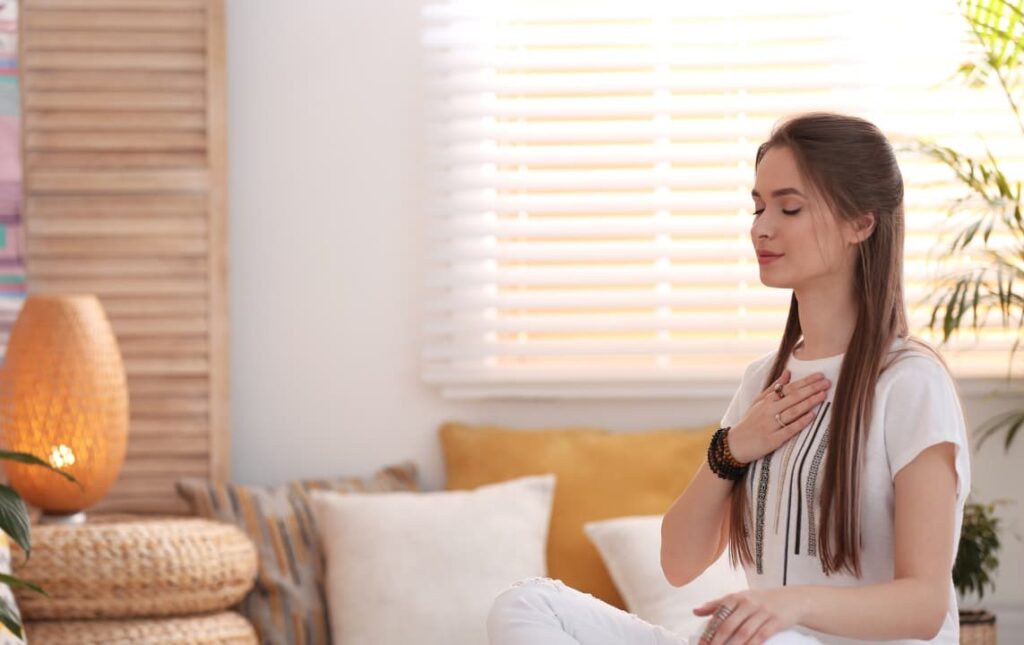
How do you form a new belief from “I’m alone” to “I’m not alone?” What’s the process?
This is an incredibly important question because many believe beliefs can change by telling ourselves to think differently or affirmatively. This is where we give affirmations a bad rap because they don’t work realistically.
If we don’t believe we’re worthy, if we just write on a post-it note, put it in front of the mirror that we look at every day that says “I’m worthy,” just mindlessly recite that to ourselves and change nothing else in our day, it’s not going to work. Even you’re worthy if nothing else has changed in action, and if you’ve not shown up in an action of worthiness because that’s what beliefs are.
They’re repeated thoughts that are grounded in our lived experience. Suppose you’re affirming that “I’m worthy.” Then traveling about the rest of your day in inaction, treating yourself as an unworthy individual or allowing your relationships to treat you in unworthy ways, that affirmation won’t work. It’s about changing our thoughts by offering that we are worthy and teaching ourselves how to sharpen that action.
How do I act that I am worthy, or how do I act that I am not alone?
Alone, worthiness, all of that is built in the foundation of presence. To feel not alone, we are in the presence of someone. That someone is me. Learning how to reconnect, not just mindlessly distract ourselves in our thoughts through life or worrying about other people, actually showing up in the worry of ourselves to build our worthiness in the action of taking care of my physical body that my body needs to be cared for and making space for my emotions, regardless of what everyone else around me is thinking or feeling of wanting or doing.
Our bodies navigate our emotions, shape our connection to ourselves and others, and define our sense of authenticity and belonging. Share on XIt’s my presence, attuning to my own needs, that will help me feel less lonely. At the same time, it will build a case that I am worthy of someone showing up for them because I am. Because in action, now I’m beginning to take care of my body, I’m beginning to make space for my emotions, and I’m hitting pause and not just doing or saying what I think you want of me.
I’m pausing to drop in and ask myself what I want or what I need, and more consistently than inaction, we show up in those ways. Now, I can’t help but not feel a little less lonely because I’m not alone anymore. I’m with me, and not only that, I have my own back. I’m acting as if I’m worthy. That’s how over time, we shift beliefs.
I am making a list of what will make me feel not lonely. Things that will show one that they’re not lonely or worthy. I will feel worthy when somebody smiles at me. I will feel worthy when I take a shower. I will feel worthy when I wear nice clothes, makeup, or little things like that.
When you start seeing it in the little things, you can manifest bigger and more important things that will show you how worthy you are. Then you go back to nothing external that needs to make me feel worthy. I am worthy just because I am. “I am” is connected to the source of energy.
I want to say something about the smallness that you’re describing here. I suggest going about it like you’re saying, in small ways. In my global membership of the SelfHealers Circle, we discuss a concept that I call “the small daily promise.” This benefits taking the slow approach. We don’t want to do that, especially when we’re in the depths of suffering.
Change your thoughts by teaching yourself how to sharpen your action of worthiness.
Everybody wants the grandiose.
It’s because we can imagine life going on like this. Logically, the quicker I do and overhaul my life in terms of worthiness. “Well, I’m going to do ten new things to convince myself that I’m worthy starting tomorrow because that’ll get me to feeling worthy quicker.”
However, we’re stuck because of those subconscious habits. Our subconscious prefers to live within the ruts of those habits because what happens next is predictable. It’ll feel safer.
Anytime we go out of those confines of safety, and we take one new step, and we take one step in a new direction, that’s going to challenge our subconscious. It’s going to set an alert for what could be in this now unknown space because I’ve never done this before. It might be a threat. Let alone taking five new steps in a different direction.
I could make a case and do in the SelfHealer Circle membership that there’s a great benefit of going slowly, making one commitment, or keeping a list and keeping the commitment to make that one promise each day. Because it will feel difficult, you won’t immediately feel worthy.
Once you do that new thing, taking a shower or whatever you’ve intended to do, it won’t immediately translate into worthiness. The feeling is the consistent keeping of that promise. My parting words on this topic are the importance of going slow. We don’t want to because we think we’ll feel better quicker, though we’re looking for habit change. Habits happen when we consistently take those new actions.
Absolutely. Like when you go to the gym, you don’t want to run ten miles when you’re not a runner. You have to take it slow. You have to do it every day to keep in shape. It’s not a one-and-done. You must repeat and create the habit—small steps, and you get stronger, bigger, and taller.
What is your membership? I’m sure you built it to help a lot of people. Please tell me about it. What is it about, and how do people participate?
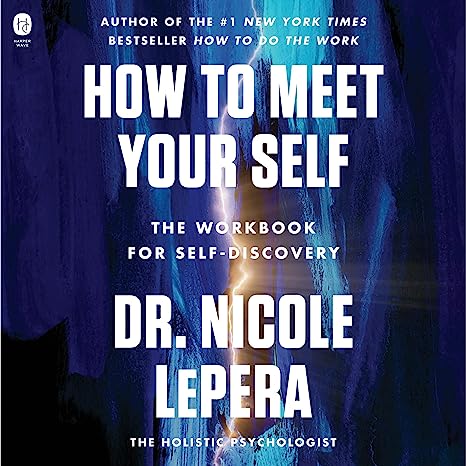
The membership was an idea that came on my healing journey. Coming to see and become aware of that first step, I saw all the different relationships and communities I had ever been involved in. Social beings who lived in cities always had an active time with others.
However, what I started to see was how infrequently I was when I was with other people. I was always watering myself down. I was never really sharing my opinions or how I felt, or what I wanted or needed. Always afraid of how the other person would react, disappointing them, and not wanting to stay connected or in a relationship with me.
As I began to see that in my healing journey, the inspiration, actually before even the circle came to be the membership for the account itself, was an action in my journey at that time. Seeing social media in how different people use it, I saw it as a space to experiment.
“Can I begin to be me and walk through all that discomfort and fear because it was behind the scenes of judgment, disappointment, and what people would think? Can I teach myself to share my journey?” I was met with a community of people from around the world who resonated with aspects of my journey because they had similar experiences. They were shifting and changing in the same way.
The byproduct of that was that lonely little girl I was sharing about earlier that was convinced of a lifetime of aloneness because though I was always around people, I embodied that saying “alone in a crowded room.” It didn’t matter who I was with, who I was dating, or what type of relationship I was in. I always had that hole inside of me.
Because I wasn’t me, I was disconnected. I wasn’t in a relationship with anyone because I never showed my true self to anyone around me.
Having done that, and having had the safety then of just people using the #selfhealer, which I started to put under my initial post and the community that we gather together under my posts on the Instagram account, it became really clear to me how powerful a community is, and how many people there were around the world, much like myself, who were desperately wanting safe communities or containers to explore this work, have these conversations, and connect with other individuals on the same journey.
To truly connect with ourselves, we must create moments of solitude, and immerse ourselves in nature to quiet our minds. Share on XI started to hear direct requests of whether we can do this off of social media. It got me thinking. I was doing individual client work at that time. I had a waiting list. People were waiting to have individual sessions with me. At the same time, I understood how important other relationships would be for everyone on their journey.
For me, it was a natural and intuitive next step to think about, “Okay, can I now create this into a membership for individuals who want a little bit deeper of a dive, a little bit more of a direction, around certain topics, and who want that community away from social media?” Because what I started to see and hear was people had family members that were following the account. People did not want to speak honestly because of who might see, and it’s understandable. It’s a public platform.
That’s how the circle was born. Now it’s almost four years old. It’s evolved a ton. We have our private membership portal now. It looks like Facebook. It’s not connected to any social media, where members have profile pages, monthly content, workshops, and live events throughout the month. There is that social engagement, that safe community.
It was all born out of the need for humans to have safety in our relationships and our environment. That first environment can begin with each of us as individuals in our relationship with ourselves so that we can create healing and change.
That’s so beautiful. Out of your pain, you created so much togetherness for many lonely people and helped them find themselves. It’s beautiful.
One of the most valuable aspects is not the content and workshops we put out; it is the community we are creating.
One of the most valuable aspects is not the content and workshops we put out; it is the community, it is the living, breathing people, where members will post and not even want feedback from anyone on the team. They want to hear from others who get it, and I’m like everyone else. There is so much healing. I get to share my journey, hearing members, sharing, and reading their stories in our portal.
I also get to feel less alone. It’s very much an active part of my healing. “How can I be me while I’m connected and in a relationship?” Not just with my partners in my private life but with humanity. Because we are all wired to come together in a global collective.
As much as we talked about social media in the beginning, being this context, this point of comparison, I’m hopeful about the resources, the communities, the tools, and the access that it can provide so many of us. Because so many of us live in countries, in neighborhoods that don’t have access to these resources, helping professionals, or conversations.
Yes. That’s awesome. With great exposure and success, like you have, what about trolls online? What about people that try to bring you down? They will judge you because looking at you is probably hitting their trauma. How do you deal with all that?
I’m giggling a little, Orion. Behind the scenes, I was giggling with Furqan, who needed me for some camera thing. I thanked him at that moment because I was on my phone. I was getting ready to do doom stress and scroll down stressful content. The reality is, as much as I did fear the contention, the disagreement, and people just not agreeing with the fact that I’m a psychologist talking about my own life, which I know in the field has been something we were trained out of doing differently.
How do you think differently?
Think differently, and share yourself as a human. I understand the clinical theory behind that in practice and with humans I’ve worked with. Most humans want to interact with other humans. But that’s a conversation for a different time, though.
That aside, the fear of what people thought was huge when I first went online, and I do want to share that because I think a lot of people, especially now that I’m as visible as I am, assume that there must not ever have been fear, that I was excited about this level of exposure. I was more afraid of what people would think that I was welcoming the visibility. A big part of me internally fears this level of visibility because of the judgment that comes with it.
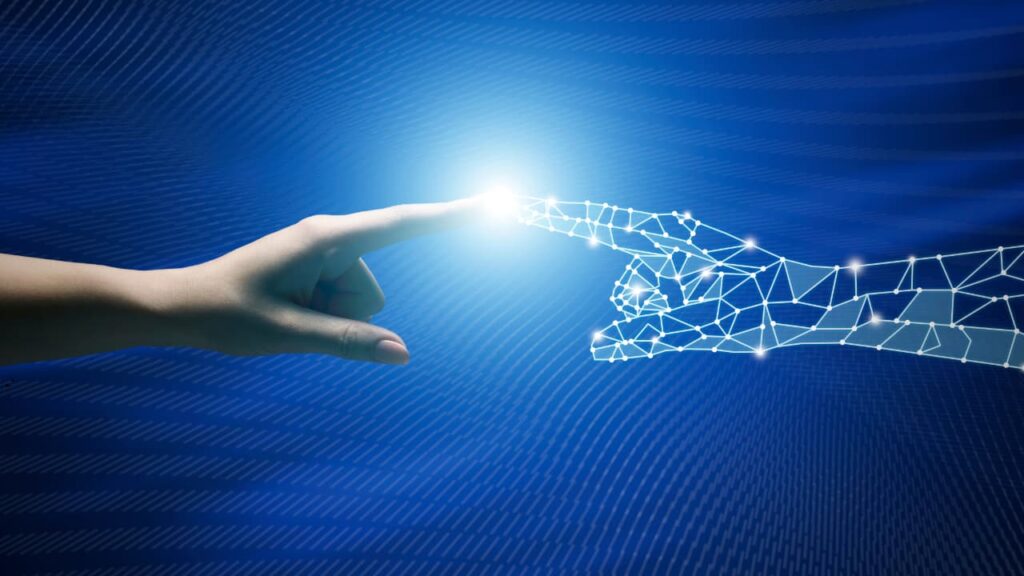
But saying all that is to say that the support has been overwhelming. Some people have all different types of negative reactions to my work. It is ever-present. How I deal with it is how I deal with most things. It’s not to say that when someone gives me feedback that makes me uncomfortable, I just disagree immediately.
I listened to all of the different types of feedback I’ve heard from all of the different types of people who have shared it because we are limited in our perspective. Much like a horse with blinders on it, it’s taken, someone else may be sharing really difficult aspects about myself for me to grudgingly say, “Oh gosh, I see that, too.”
This isn’t me to say because I don’t think all feedback is bad. Feedback from trusted individuals who spent enough time with you to have this vantage point can help us remove the blinders and see something we cannot see ourselves.
With that said, I’ve heard, consumed, and read all the different types of feedback, and I’ve allowed myself to try it on, to have those difficult moments of “Okay, could someone else’s perception or reality be reflecting something I can’t see?”
Of course, I have supportive people I talk with personally. In those moments, I realize that this might not be as much about me. As we’re talking about earlier, all the different things that elicit reactions from people. It might be the newness of my message. I might be touching something, causing you to feel unfamiliar or challenging something deeper.
We can't make new choices until we recognize what habits and choices we create on autopilot. Share on XWhatever it might be, I can depersonalize that. I can still hold space for the validity of your perspective, what you think, how you’re feeling, or even how you’re expressing it within safe boundaries. At the same time, I can stay affirmed in my truth, certainty, and self.
That’s not to say I’ve learned over time to use boundaries, to create if there are actions that are creating dysregulation, if people are overwhelming or saying abusive things, which can sometimes happen when someone’s activated. I can keep myself safe by using boundaries and ending the conversation by hitting the block if it feels threatening enough.
That’s my responsibility, as is when Furqan caught me doom-scrolling because that’s another. I would know where criticism lives. I fear criticism, like the little child inside of me, like we’ve been talking about. I don’t like people not liking me. I don’t like people having different opinions about me. I’m used to always watering myself down. That part is still there.
In moments where I’m already feeling stressed or overwhelmed, or I haven’t been sleeping well, or I have a lot on my plate in terms of work obligations, or whatever it might be, those are the moments where that wound comes alive, much like today, where that wound wants to validate itself. I want to scroll the trolls. I want to affirm that I’m just as mean and terrible and no good as I fear or, as we’ve talked about, unworthy, as I fear myself.
What do you do at that moment?
I share this because I can say everything again and keep myself protected and depersonalized. It’s not about me, and it’s them. I’m still knee-deep and getting ready to go down something that will be stressful for me. I can only do what we can all do: hold myself consciously accountable in those moments.
I asked myself when Furqan said, “Hey, I need you for a minute.” I had the moment of saying, “Do I want to continue this scroll when he doesn’t need me anymore?” And the answer was no. I threw my phone when I was available. I shifted, knowing that I had a podcast. I don’t want to be in a stressed-out state.
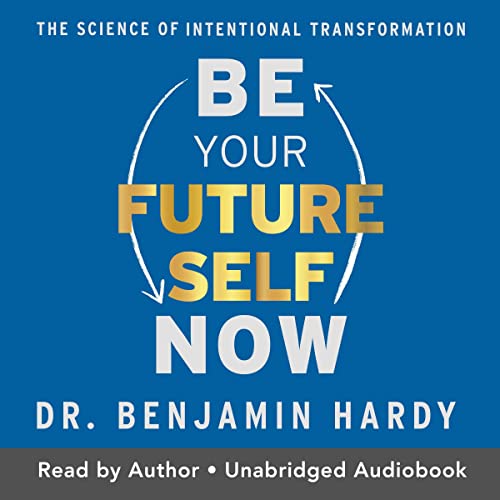
I know it’s there. I don’t have to contribute to my dysregulation by engaging with it. I can inaction now to show up to protect myself in a way that feels better for me. But it doesn’t mean that all that temptation isn’t there. It doesn’t mean that, on occasion, I don’t keep scrolling. I don’t keep dysregulating and upsetting myself by affirming that I’m unworthy.
Thank you for sharing that in such a vulnerable and real way. That’s awesome. I’m reading Dr. Ben Hardy‘s book, Be Your Future Self Now. He’s talking about the people in the arena and the spectators and how there is just enough glamor or glory in being a spectator than in being the actual player on the field.
He said, “Never take advice from somebody unwilling to switch places with you.” That was so profound. So easy to listen to the spectators, the people not doing that, fighting for their greatness and contribution. They play the big game in the arena. And the players never go and watch games, and listen to the people that narrated the game, because it’s not for them. They’re in the field they’re playing. That’s what’s important.
I’m also thinking about why I readily and freely share my journey. Often, we don’t even take our advice. That’s why I share the behind-the-scenes. I can sit here and say all the steps in doing the steps is where we meet. It is important for all of us living or making more visible choices, living more publicly, to be in the arena.
It is important to continue to be honest with the whole experience, which means that it doesn’t come without fear or moments where I don’t feel worthy, or I’m unsure of why people are even looking at me in the arena. Because again, I do think, and I’ve heard directly from people, this assumption that that must not be the case because of what’s being projected outward or even projected onward.
The reality of it is it is a continued struggle. It’s a negotiation between the wound inside of me that is so fearful of all that’s going to happen if I’m just who I am and the whole, beautiful, limitless being that’s connected to the source that knows that I can continue to show up in a different, more expanded way, though not without all the difficulty of building that bridge from inside into that action.
Yes. If we imagine our brain like a jungle, if the path of trauma is open, we move away from it. You open the path of self-love, then the more you are in that path of self-love, it’s like that path is growing bigger, and the path of trauma is shrinking and shrinking and shrinking until one day you wake up and you’re like, “That’s not there. It doesn’t even bother me. I’m good. I know who I am, and this is amazing, and I’m grateful for who I am. I’m connected to source, and I’m helping a lot of people.” That’s pretty damn good.
When we create separation from negativity, we open the possibility for a stellar life.
Oh, it’s incredible, and it’s transformative. What you’re describing is the reality of our mind and body, which is that it can change. You can create a new jungle, a new pathway. However, it is that you want to visualize it at any age. How hopeful can that message be? Many of us get over it, as I once had the internalized idea or belief that it’s not for us.
“Oh, that’s great. That might be for Dr. Nicole, this new jungle, this new path, but it’s not for me.” I was that person. I would read about crazy life-changing experiences that people had and the new lives they’ve created for themselves. I wouldn’t necessarily criticize or tear them down or even talk badly about them. I say, “Oh, good for you, but it won’t happen for me.”
However, back to that neuroplasticity, and the hope, the reality is it can happen. It might not be your belief just yet, because you haven’t been able to create change. You haven’t been able to maintain new consistent actions that allow you to feel differently or believe differently over time. When you begin to string together those new small promises, you will live that experience. Nothing is the greater teacher than us teaching ourselves by giving and gifting even a new experience.
It’s beautiful. If you’re listening to this right now, that’s a sign that you’re destined for greatness, and there is a rhyme and a reason why you’re listening to this right here. Sitting or lying down or wherever you’re listening to it is because your future is beautiful and bright. You will manifest it if you believe in it and are connected.
Please share your three top tips for living a stellar life.
My top tip is always to have a stellar life that begins in the present and that conscious awareness. Become present, make that choice, focusing our attention on what is here and what is now. That is the foundational tip of living a stellar life.
In that shift of attention and focus, another tip for living a stellar life is to create that space we’ve been talking about and learn the difference between the habits I’ve come to identify with and that limitless being inside. When we create that separation, we open that door more for the possibility of that stellar life.
The final tip, again, to be true as always, is everything, the intuition, the purpose, the passion, that inner knowing is inside. As we become more connected, peeling off all those onions, we become and live a stellar life because we become who we are.
We are all stellar or limitless. We’re beautiful beings that will never have a similar energetic expression anywhere. We are us, and that makes us stellar, just by inherently being, so when we can create that space just to be as we are, we naturally live a stellar life because that’s who we are.
Thank you. Thank you for those beautiful words. Where can people find you, Dr. Nicole LePera, get your books, and join the circle?
Thank you for having me, Orion. Thank you for having this podcast and all these incredible conversations, and thank you all for listening. At this point, however, whatever social media it is that you prefer to consume your content. We have an account across Instagram where it all began. You can type in “The Holistic Psychologist” and find the handle on TikTok, YouTube, and Twitter.
For more information on the SelfHealers Circle, check out selfhealerscircle.com or theholisticpsychologist.com to jump on our email list and stay connected with all things at The Holistic Psychologist.
Thank you, Dr. Nicole. I appreciate you. And thank you, listener. Remember to be present and connect to the limitless being because everything is inside you. Remember that and have a stellar life. This is Orion till next time.
